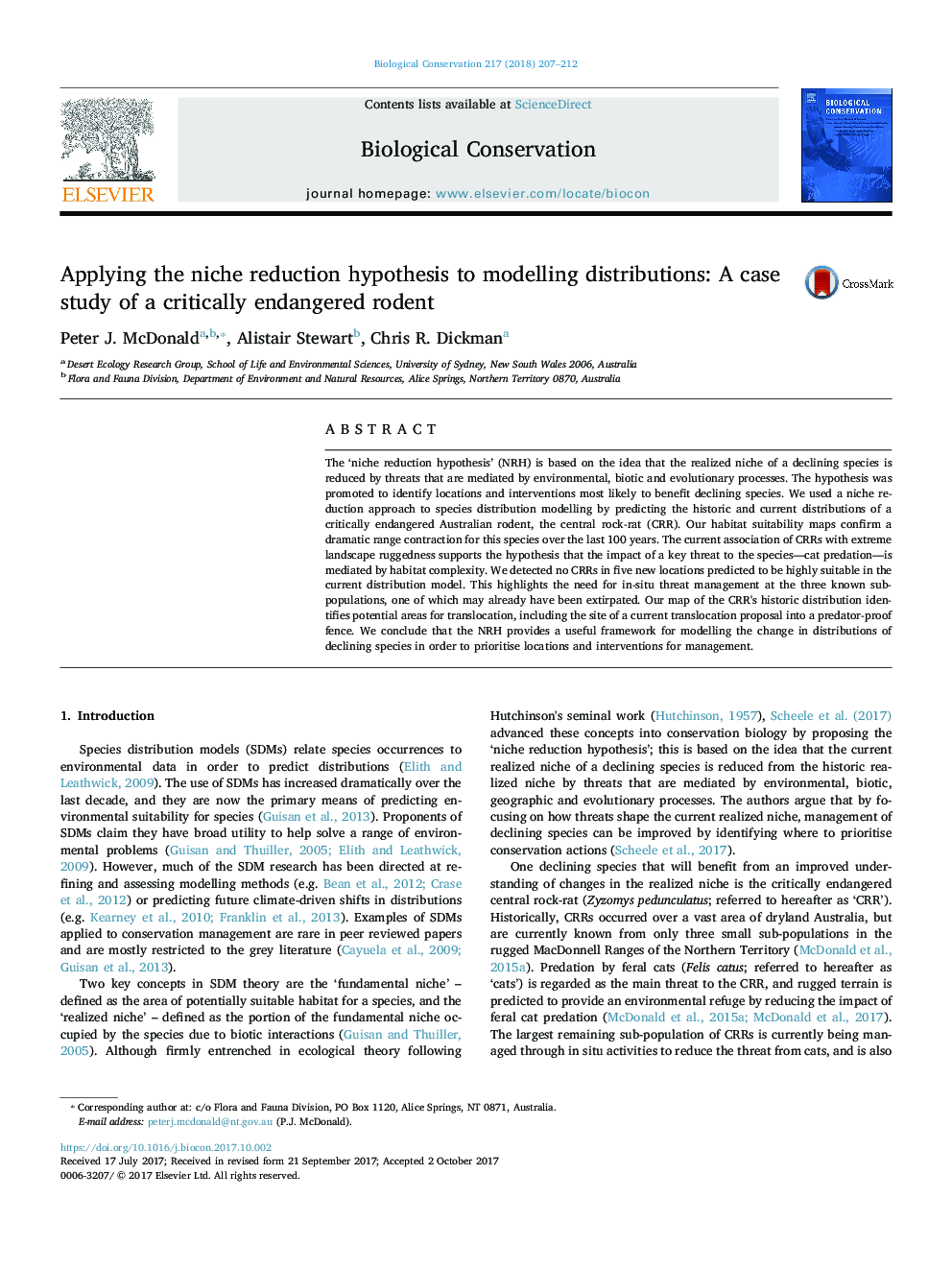| کد مقاله | کد نشریه | سال انتشار | مقاله انگلیسی | نسخه تمام متن |
|---|---|---|---|---|
| 8847596 | 1617888 | 2018 | 6 صفحه PDF | دانلود رایگان |
عنوان انگلیسی مقاله ISI
Applying the niche reduction hypothesis to modelling distributions: A case study of a critically endangered rodent
ترجمه فارسی عنوان
استفاده از فرضیه کاهش تخریب به توزیع مدل سازی: مطالعه موردی یک جوجه منتقد در معرض خطر
دانلود مقاله + سفارش ترجمه
دانلود مقاله ISI انگلیسی
رایگان برای ایرانیان
موضوعات مرتبط
علوم زیستی و بیوفناوری
علوم کشاورزی و بیولوژیک
بوم شناسی، تکامل، رفتار و سامانه شناسی
چکیده انگلیسی
The 'niche reduction hypothesis' (NRH) is based on the idea that the realized niche of a declining species is reduced by threats that are mediated by environmental, biotic and evolutionary processes. The hypothesis was promoted to identify locations and interventions most likely to benefit declining species. We used a niche reduction approach to species distribution modelling by predicting the historic and current distributions of a critically endangered Australian rodent, the central rock-rat (CRR). Our habitat suitability maps confirm a dramatic range contraction for this species over the last 100Â years. The current association of CRRs with extreme landscape ruggedness supports the hypothesis that the impact of a key threat to the species-cat predation-is mediated by habitat complexity. We detected no CRRs in five new locations predicted to be highly suitable in the current distribution model. This highlights the need for in-situ threat management at the three known sub-populations, one of which may already have been extirpated. Our map of the CRR's historic distribution identifies potential areas for translocation, including the site of a current translocation proposal into a predator-proof fence. We conclude that the NRH provides a useful framework for modelling the change in distributions of declining species in order to prioritise locations and interventions for management.
ناشر
Database: Elsevier - ScienceDirect (ساینس دایرکت)
Journal: Biological Conservation - Volume 217, January 2018, Pages 207-212
Journal: Biological Conservation - Volume 217, January 2018, Pages 207-212
نویسندگان
Peter J. McDonald, Alistair Stewart, Chris R. Dickman,
